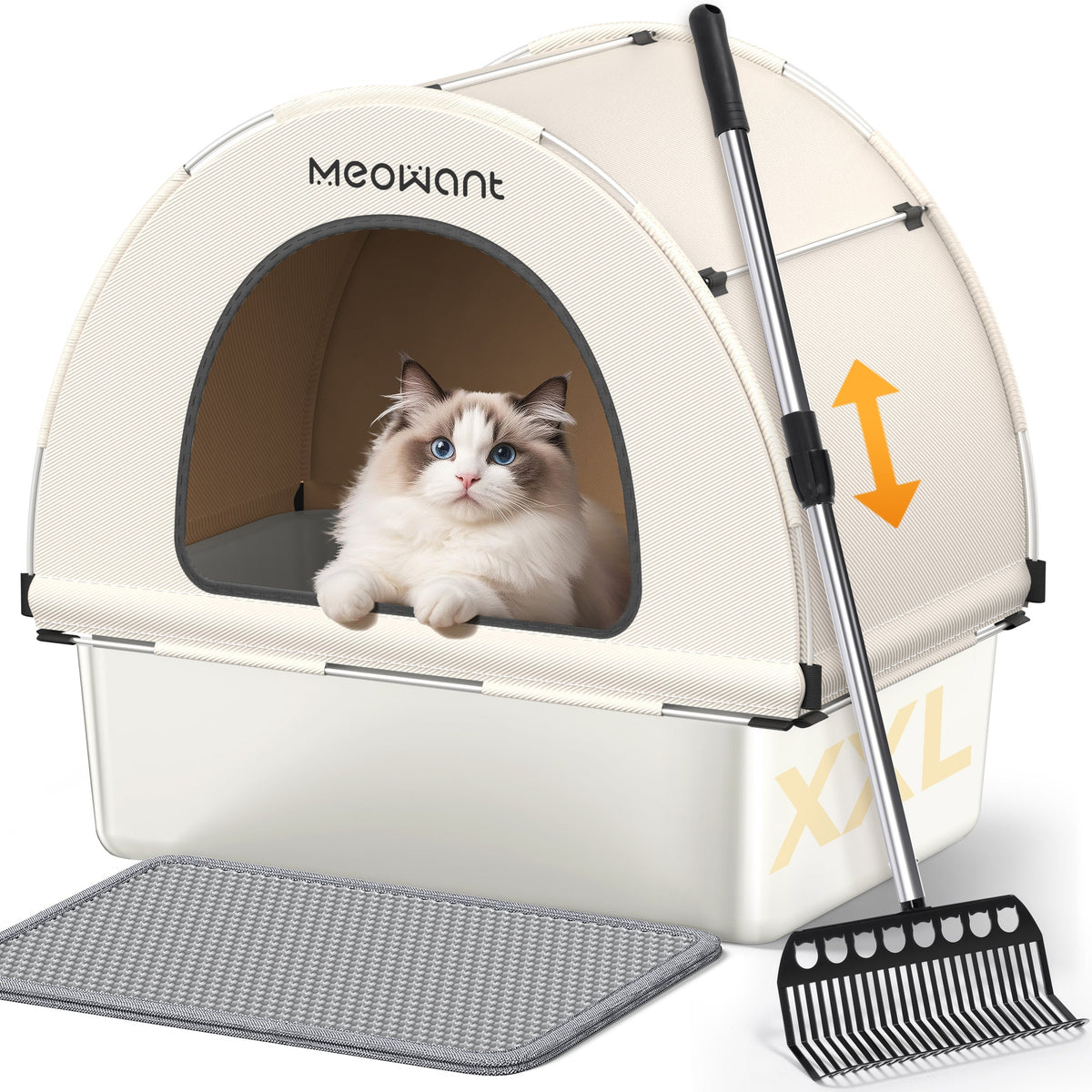How Can I Tell If My Cat Is Cold?

Do cats get cold? Absolutely. We often think of our cats as these fluffy, self-sufficient little creatures, but the truth is—they feel the cold just like we do. Indoor cats, especially those who aren't used to big temperature swings, can definitely get chilly when the weather changes or if there's a drafty window they like to nap beside. If you've ever wondered, "Is my cat actually cold, or just being dramatic?"—this guide will help you spot the signs and keep your feline cozy.
Can Cats Catch a Cold?
First, let's clarify: when we say a cat has a "cold," we usually mean an upper respiratory infection (URI), often caused by feline viruses like herpesvirus or calicivirus. These aren't the same as human colds, but the symptoms look familiar:
- Sneezing
- Runny nose
- Watery eyes
- Lethargy
Can Cats Get Colds from Humans? Not really. The viruses that cause human colds don't usually affect cats, and vice versa. But—stress, a weakened immune system, or exposure to other sick cats can definitely put your furry friend at risk.
If your cat's showing cold-like symptoms, it's not because you sneezed on them. But they might have picked something up from another cat or just need a bit more comfort and care.
Signs Your Cat Might Be Cold
Cats won’t tell you they’re freezing, but their behavior and body language give clues.
Physical Signs:
- Shivering: Obvious, but not all cats shiver visibly.
- Cold ears/paws: Feel the tips of their ears or paw pads—if they’re icy, your cat is likely chilly.
- Curling into a tight ball: Conserving body heat by tucking paws under their body.
Behavioral Signs:
- Seeking warmth: Camping out near heaters, burrowing under blankets, or stealing your seat after you get up.
- Reduced activity: Less playfulness, more napping in warm spots.
- Hiding more than usual: Cold cats may retreat to enclosed spaces (like under beds) to stay warm.
These signs can be subtle, especially since cats are masters at hiding discomfort. But if your cat’s behavior has changed with the temperature drop, it’s worth paying attention.
How to Keep Your Cat Warm & Healthy
Cats may act tough, but when temperatures drop, they rely on us to keep them warm and comfortable. If you’ve noticed your cat burrowing under blankets or avoiding cold floors, it’s time to step up their coziness game. Here’s how to ensure your feline stays snug—and why a self-cleaning litter box might be a smart addition to your winter care routine.
Practical Ways to Keep Your Cat Warm
1. Create a Warm Sleeping Spot
Cats love heat, so give them a dedicated warm zone:
- Heated cat beds – Low-wattage, pet-safe options are perfect for chilly nights.
- Soft blankets – Place them in sunny spots or near (but not too close to) radiators.
- Cardboard boxes with blankets – An easy DIY insulator—cats love the enclosed warmth.
2. Maintain Stable Indoor Temperatures
Sudden temperature swings stress cats out. Aim for a consistent 68–75°F (20–24°C) indoors. If you lower the thermostat at night, ensure your cat has a warm retreat.
3. Try Cat Clothing (If Your Cat Tolerates It)
Hairless breeds (like Sphynxes) or short-haired cats may benefit from a lightweight sweater—but only if they don’t mind wearing it. If your cat acts like you’ve betrayed them, stick to heated beds instead.
Bonus Tip: A Self-Cleaning Litter Box Helps
Cold weather can make cats reluctant to use a dirty litter box. A self-cleaning litter box keeps their bathroom area fresh, reducing stress and preventing bacterial buildup—especially important if your cat is already under the weather. Plus, nobody wants to scoop freezing-cold litter in winter!
When to See a Vet
But if your cat’s symptoms aren’t improving after a few days—especially if there’s wheezing, loss of appetite, or labored breathing—it’s time to call the vet. Sometimes, a "cold" cat might actually be sick. Watch for:
- Persistent cold symptoms (sneezing, runny nose for more than a few days).
- Lethargy or loss of appetite – Could signal an infection.
- Signs of hypothermia – Extreme shivering, weak pulse, or shallow breathing (seek emergency care).
Final Thoughts
Yes, cats do get cold—and yes, they can get colds. Your job is to notice the little changes, like them shivering or suddenly hiding in your laundry basket, and step in before it gets worse.
A few simple tweaks—like adding a warm bed, keeping your home cozy, and making sure their litter box stays fresh with a self-cleaning system—can go a long way in keeping your furry friend happy and healthy.
